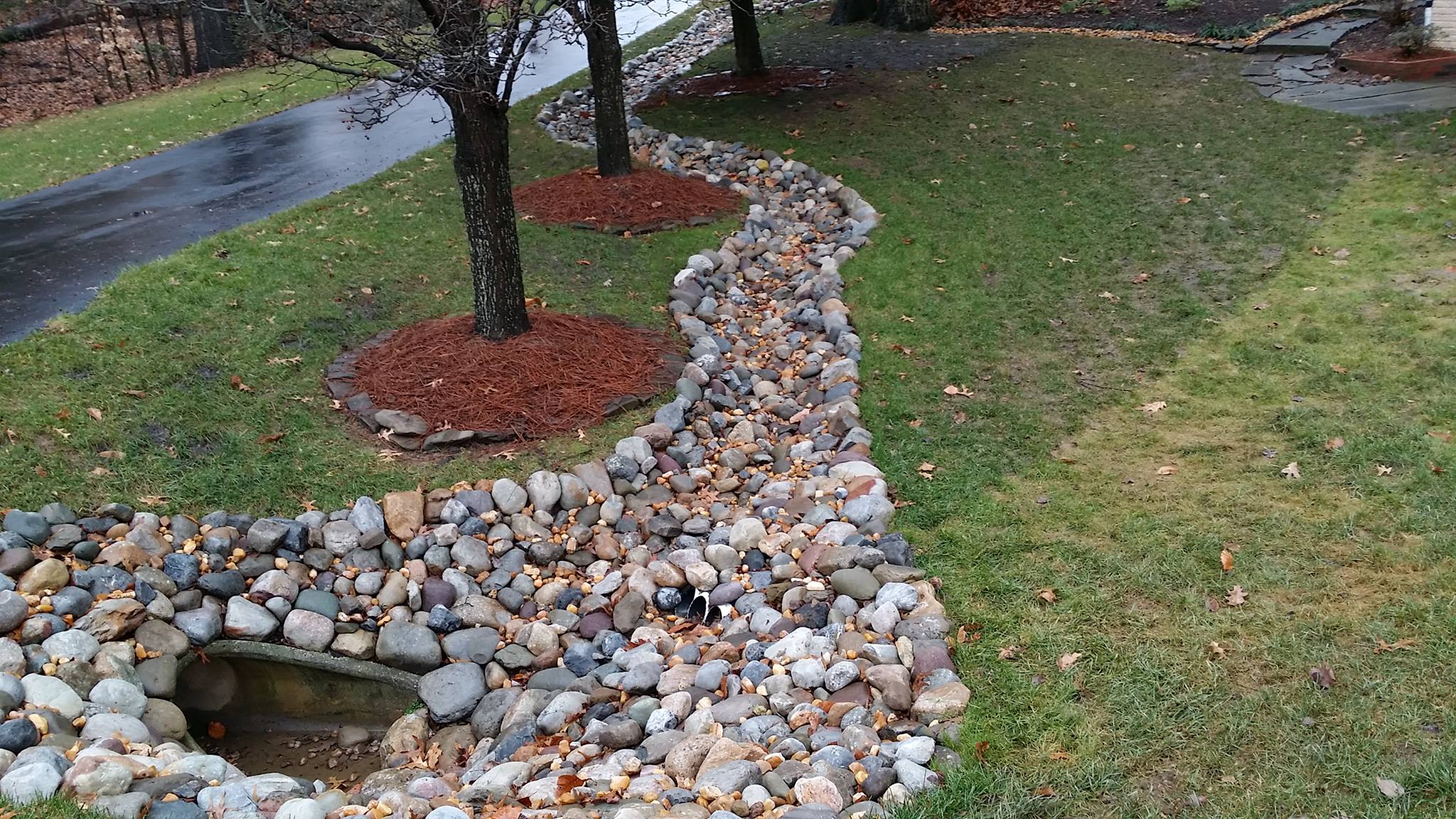Swales are a type of subsurface drainage system. These systems are found on many properties, but they’re often underutilized or completely forgotten. Swales work by channelling water away from your home and property to prevent flooding and erosion. They also help improve soil quality, attract wildlife and can be used as garden beds.
Here’s more on the Swale drainage system
Definition and purpose of swale drainage system
A swale drainage system is a series of ditches dug into the ground that collect water and direct it away from buildings or other structures.
Swales are used for many purposes, including:
- Drainage
- Erosion control
- Irrigation (in permaculture)
In addition to these uses, swales can also be used to harvest rainwater for irrigation purposes. Let’s discuss this in more detail below!
Importance of managing swale run-off
Swales are important parts of any drainage system. They can be used to manage water runoff, prevent erosion, and even improve the quality of your soil. To get the most out of your swale drainage system, you must understand how it works and what benefits it offers.
What is a swale?
A swale is a low-lying depression that conveys water to a watercourse. It is usually found in the transition zone between a wetland and a drier upland, where it collects water from precipitation or runoff. Swales are often used as part of an integrated farming system to control runoff, divert floodwaters and improve soil fertility through natural processes like infiltration, evapotranspiration and plant growth.
Functions and benefits of a swale drainage system
A swale drain system can be used for many different purposes. It can be used to divert water in your yard, or it can be used to collect rainwater and use it for irrigation purposes. Either way, a swale drainage system will help keep the environment healthy by preventing runoff from harming plants or polluting water sources.
Types of Swales
Swales are a type of water management system that can be used for many different purposes. A swale is a ditch or trench that allows rainwater to percolate into the ground instead of running off into storm drains and flooding your property. Swales are often used on farms as part of an agricultural drainage system or in urban areas to prevent water from pooling in low-lying areas and causing damage.
In addition to preventing flooding, swales have other benefits too: they reduce erosion by slowing down runoff; they improve soil quality by adding nutrients such as compost and mulch; they help recharge groundwater supplies; they provide habitat for birds and other wildlife; and they can even be used as recreation areas!
Swales, versatile in their design and function, offer various types suited for different terrain and drainage needs:
Grassed Swales
- Definition: These are vegetated channels with grass or other plants that aid in water absorption and filtration.
- Functionality: The grassed cover slows down water flow, allowing for natural filtration and infiltration into the soil.
- Ideal Locations: Well-suited for residential areas, parks, and open spaces due to their aesthetic appeal and suitability for gentle slopes.
Rock-Lined Swales
- Definition: These swales incorporate rocks or gravel along the base or sides, enhancing their durability and erosion control.
- Functionality: The rocks help in directing and managing water flow while minimizing soil erosion.
- Ideal Locations: Commonly used in areas prone to higher water velocity, such as roadways, to prevent erosion and aid in effective water channelling.
Combination Swales
- Definition: A combination of grassed and rock-lined swales, merging the benefits of both types for improved efficiency.
- Functionality: Integrating vegetation and stone elements helps optimize water absorption, filtration, and erosion control.
- Ideal Locations: Versatile and adaptable, these swales are suitable for varied terrains and applications, offering multifaceted drainage solutions.
Each type of swale has its advantages and is chosen based on the specific terrain, flow
patterns, and drainage requirements of the area. Selecting the appropriate type ensures effective water management while complementing the surrounding landscape.
Planning your swale drainage system
Swale installation should be part of a larger rainwater management plan. The type of swale you choose to install depends on the site’s soil type and slope, so it is important to consider these factors when planning your drainage system.
The first step in designing a swale drainage system is determining which type will work best for your property. There are three main types: riparian (along rivers), tidal (along the coast), and terraced (used on sloped land). Each has its characteristics that make it better suited for certain applications than others; for example, riparian systems require less maintenance than tidal ones because they rely less heavily on vegetation for filtration purposes
Assessing your property
To properly assess your property, you will need to:
- Assess the soil type and drainage potential. If you have sandy or clay soils, swales will not be as effective in draining water from your land.
- Assess the slope of the land. A steep hillside will require more work than a gentle slope when installing a swale system because you’ll need to dig deeper into the earth to create an effective channel for runoff water flow.
- Assess the water table level on site (how deep underground does it go?). You don’t want too much water flowing through your swale system if it means that it would seep into an area where there isn’t enough space between layers of soil underneath them yet–this could cause erosion issues further downslope due to lack of support structure holding up those layers against each other while they’re still being formed during early stage of development
Design considerations for swale installations
Swales are designed based on the local climate, soil conditions, and slope of the land. Swales should be installed to drain excess water from a site. The amount of water that needs to be drained will determine how big your swale needs to be. If you have a large amount of water that needs to be drained during heavy rains or snow melt then you will want to make sure that your swale is large enough so it can handle this extra volume without overloading its capacity.
Steps to implement a swale drainage system
To implement a swale drainage system, follow these steps:
- Determine where the swales will be located. You can use tools and software to help you visualize how water flows through the landscape and determine where you might want to place your swales. You may also want to consult with an engineer or landscape architect for assistance if you’re not sure about where to place them.
- Excavate trenches so that they are 5-6 inches deep and wide enough for soil movement (about 3 feet). This will help ensure that your trench does not collapse during heavy rains or snow melt events by taking pressure off its sides.
- Add soil amendments such as compost into each trench as needed before planting native vegetation like grasses along its length–this will create shade which slows evaporation rates while improving soil quality over time by adding nutrients such as nitrogen directly into flooded areas where they’re needed most!
Environmental Impact
Swales are an environmentally friendly way to manage water. Swales can be used to filter and clean water, as well as reduce erosion. A swale drainage system is easy to maintain, requires little maintenance and will last for many years if properly installed by a professional contractor or homeowner with the right tools and education.
In a nutshell
Swales can be an excellent way to manage stormwater and protect your property from flooding. They are simple and effective, and they have many other benefits as well. After reading this article, you should have a better understanding of what swales are and how they work. You should also know some important factors to keep in mind when planning for one on your property!
Ready to enhance your property’s drainage with swales? Connect with our drainage experts for tailored solutions and efficient water management strategies! Contact us today for personalized guidance.











